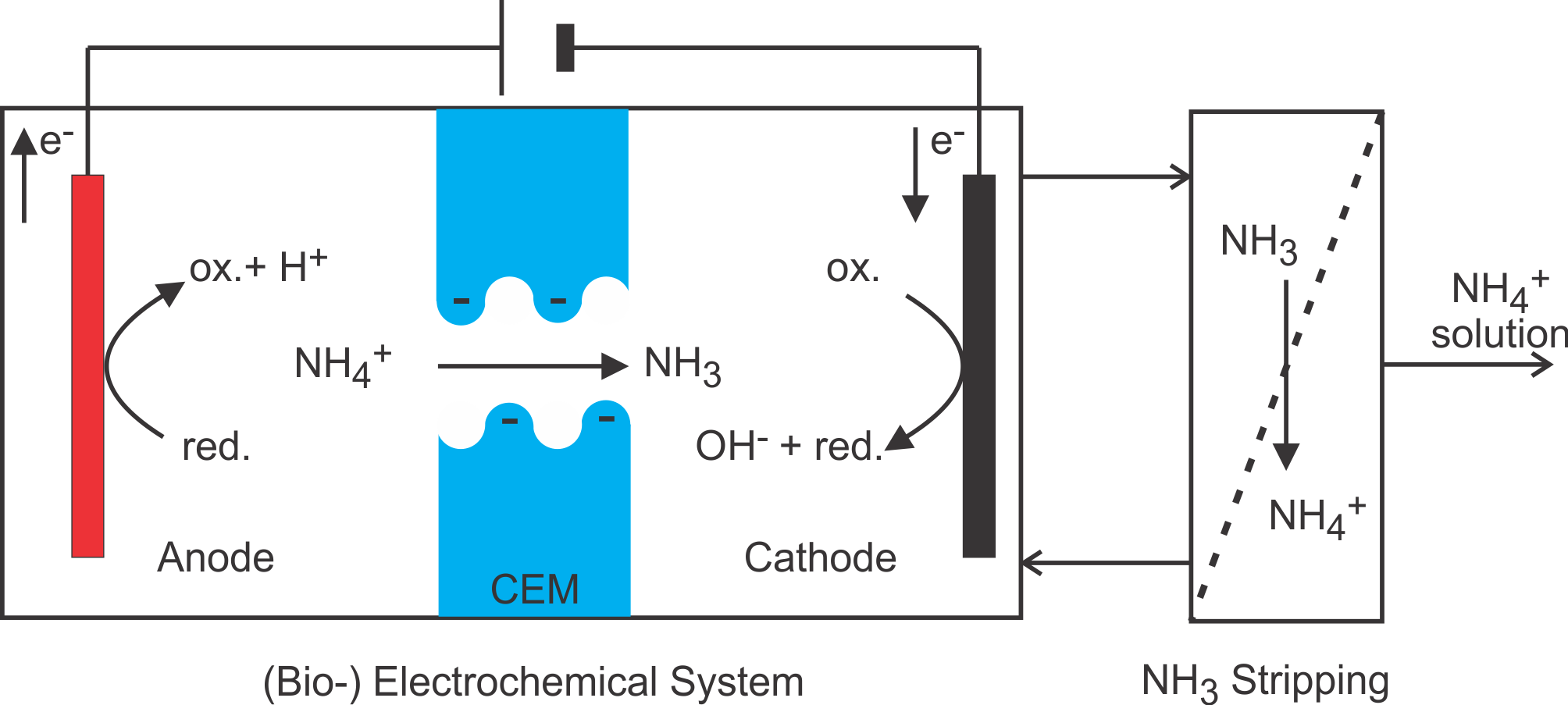
(Bio)electrochemical ammonia recovery: progress and perspectives
Authors: P. Kuntkea, T. H. J. A. Sleutelsa, M. Rodríguez Arredondoa,b, S. Georga,b, S. G. Barbosac, A. ter Heijneb, Hubertus V. M. Hamelersa & C. J. N. Buismana,b
a Wetsus, European Centre of Excellence for Sustainable Water Technology, Oostergoweg 9, 8911MA Leeuwarden, The Netherlands
b Department of Environmental Technology, Wageningen University, Bornse Weilanden 9, P.O. Box 17, 6700 AA Wageningen, The Netherlands
c CEB – Centre of Biological Engineering, University of Minho, Campus de Gualtar, 4710–057, Braga, Portugal
Published in: Applied Microbiology and Biotechnology (2018) 102:3865–3878 (09 March 2018)
Abstract: In recent years, (bio)electrochemical systems (B)ES have emerged as an energy efficient alternative for the recovery of TAN (total ammonia nitrogen, including ammonia and ammonium) from wastewater. In these systems, TAN is removed or concentrated from the wastewater under the influence of an electrical current and transported to the cathode. Subsequently, it can be removed or recovered through stripping, chemisorption, or forward osmosis. A crucial parameter that determines the energy required to recover TAN is the load ratio: the ratio between TAN loading and applied current. For electrochemical TAN recovery, an energy input is required, while in bioelectrochemical recovery, electric energy can be recovered together with TAN. Bioelectrochemical recovery relies on the microbial oxidation of COD for the production of electrons, which drives TAN transport. Here, the state-of-the-art of (bio)electrochemical TAN recovery is described, the performance of (B)ES for TAN recovery is analyzed, the potential of different wastewaters for BES-based TAN recovery is evaluated, the microorganisms found on bioanodes that treat wastewater high in TAN are reported, and the toxic effect of the typical conditions in such systems (e.g., high pH, TAN, and salt concentrations) are described. For future application, toxicity effects for electrochemically active bacteria need better understanding, and the technologies need to be demonstrated on larger scale.
Download: here
DOI: 10.1007/s00253-018-8888-6
License: CC-BY4.0
